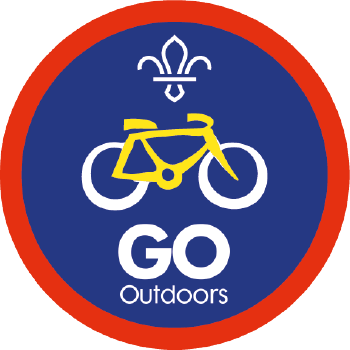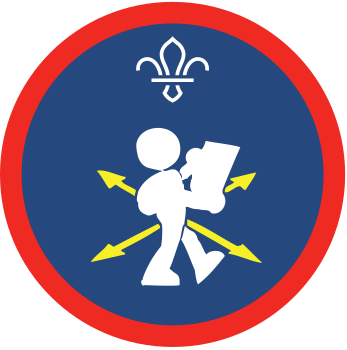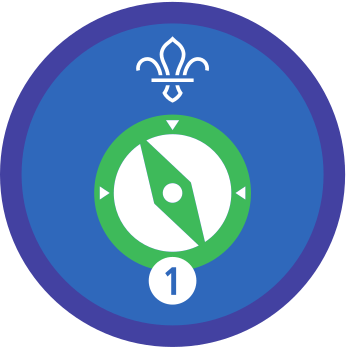Map it out
You’ll need
- Tables
- Chairs
- Pens or pencils
- Scrap paper
- Rulers
- Scissors
- OS maps of scale 1:25000 and 1:50000 for the same area
- Greaseproof paper
- Hiking gear, as needed
- Route cards, as needed
Before you begin
- Have some information on map features and symbols, such as contour lines, printed out ready. Web links to resources have been provided in the activity instructions. Those working towards stage 5 of the Navigator Staged Activity Badge will each need a copy of the route card from the Only a mile to go activity.
- Make sure you have enough helpers to run this activity. Each group will need at least one helper per base to keep an eye on them and help them grasp the techniques described in this activity.
- Make three bases from tables for groups to work at, with maps, paper and writing materials. At least two of the bases will need at least one computer or device with internet access, or the linked information will need to be printed. Assign helpers to their base.
Learn the basics
- Split everyone into the same number of groups as you have bases. For the bases below, you’ll need three groups.
- Explain that you’ll be learning about methods of navigation that don’t require a compass. Groups will go around the bases and learn a new skill at each one. At each base, everyone should get 10 to 15 minutes learning and practising time. You could use these bases we’ve suggested below.
- Have your groups rotate between the bases until each group has completed each base activity. Then, everyone should split into smaller groups of no more than four people.
- Each group should create a route on a map for another group to follow. They should start by saying what scale map they’re using and where the group will be starting out in the route instructions. Instructions should then include finding landmarks to orientate the map, address the gradient(s) as shown by contour lines, and note the precise location of the end point with a six-figure grid reference and a roamer.
You could address the gradient(s) by instructing the group to climb the steepest side of a hill to reach a landmark at the top.
- When the routes are ready, each group should pass their route instruction to the right. Groups should get a copy of the relevant map and follow the instructions to complete the route with a finger on the map.
If using printouts of map pages, you could draw on the route in pencil.
- Contour lines show us what the terrain or ‘topography’ of an area is like before visiting it. The lines are drawn at 10-metre intervals and show the incline or decline on slopes or flat land. They also show people key features of the terrain that can be used to help with navigation, such as cliffs, valleys and summits.
- Have a look here for more information on contour lines and how to identify them on a map. Using these sheets to help, get everyone to identify the key features on both of their OS maps.
- Also, consider giving the group a start and end point and ask them to identify any features along that route, and calculate what altitude gain or loss they will experience between the two points. This will help them learn how to recognise undulating terrain when out on a hike.
- Use the pens and paper during this base to help if needed and remember to use both sizes of map throughout.
- If you need more of a practical method to learn about contours, have a go at the Contour creations activity.
- ‘Orientating’ or setting a map involves using the lay of the land and any landmarks around you to identify which way the map should face, to help with navigation.
- To orientate a map, find a feature or landmark that’s visible both on the map and from where you’re standing. Line up the landmark on the map with where you can see it. For example, if there’s a lake behind you, stand with your back to the lake and turn the map so that the lake is at the bottom. To check that this is correct, take another landmark and check that it’s in the same position/location on the map as it is where you can see it. By doing this, it also makes it easier to identify which way is north, as the north arrows will point north relative to where you’re standing.
- Finding north without a compass can be done several ways. There are different methods for day and night. During the day, you can look for the position of the sun or even the moss on trees, while at night constellations and the North Star are the most helpful navigation tools. Have a look for different methods of how to find north without a compass.
- To help everyone practise or learn about how to find six-figure grid references, consider having a go at the Six-figure bingo activity as a group before running this.
- Using a roamer can help identify grid-references more accurately, as they break the grid square up into a smaller grid. They’re 10x10 grids, which when placed on top of a grid square divide it up, so that a more accurate grid reference can be taken. Roamers can be bought, they can be found on the edge of a compass or can be made at home.
- Give everyone the opportunity to create their own roamer. They could do one for both OS map scales. To make one, place some greaseproof paper on top of the map and draw around a grid square. Divide the square up equally into a 10x10 grid.
- Using the same method as finding a six-figure grid reference, you can then find your precise location within a grid square on the map. Give each person a precise location to find with their roamers and a six-figure grid reference on either map.
This additional activity will need to be completed over two sessions. The first part is about planning a walk and the second completing the walk. Make sure there are enough leaders and helpers to support each group during the walk.
- Put everyone’s new skills to the test. Split everyone into groups of between four and seven and get them to sit at a table.
- Explain to everyone that they’ll be completing a walk as a team using their new map skills. They’ll need to create a route made up of four legs to be walked around their local area. Each group will need to fill out their route cards for each leg of the walk. If needed, have a look at the Only a mile to go activity for more information on how to fill out a route card.
- Give everyone 30 minutes to complete their route cards. Make sure the route starts and finishes in the same place and is achievable in a single session. It doesn’t have to be long, so long as new skills are practised. Remind everyone that they’ll only be able to use their map to navigate through all four legs of the route, so each route needs to be fairly simple and easy to follow. It’s a good idea to take a compass and keep a copy of the route card with them in case of emergency.
- Once done, collect in all the routes and as a whole group, have a discussion about equipment, safety and appropriate clothing and footwear for the walk.
- Just before going out on the walk give each team back their route cards and a map, and make sure they have all the equipment they need. Make sure you’ve read all the information on safety here and the leader going on the walk has all the emergency contacts, the equipment they need and a way of contacting someone in an emergency.
- The groups should begin their walks.
- Once everyone’s back, have a discussion about how well they think the walk went. See if there was anything they’d do differently and ask what they found most enjoyable.
Reflection
Not having a compass to navigate can sometimes be quite hard. But it helps you to learn how to read the land and terrain, rather than following what the compass says all the time. Contour lines help describe the features before you get to a location. Why do you think this will help you before going on a hike? Everyone would be able to prepare themselves for lots of walking up and down hills or for an easy, level surface. Using this in practice will help them identify the features that the lines represent.
Being able to find north without a compass can also help us work out which way to go or how to find a location, if you’re ever unsure. Using a roamer is a more accurate way to find a location. How do you think this will help when out on an expedition or hike? Have a think about how it can help identify meeting points or key features along the route you’re taking to make sure you’re on the right track.
Safety
All activities must be safely managed. You must complete a thorough risk assessment and take appropriate steps to reduce risk. Use the safety checklist to help you plan and risk assess your activity. Always get approval for the activity, and have suitable supervision and an InTouch process.
- Outdoor activities
You must have permission to use the location. Always check the weather forecast, and inform parents and carers of any change in venue.
- Hiking and walking
Follow the guidance for activities in Terrain Zero, or the guidance for each the adventurous activity.
- Dark
Provide some light, so the environment isn’t completely dark. Everyone must be able to see others and move around the area safely.
- Online safety
Supervise young people when they’re online and give them advice about staying safe. Take a look at our online safety or bullying guidance. The NSPCC offers more advice and guidance, too. If you want to know more about specific social networks and games, Childnet has information and safety tips for apps. You can also report anything that’s worried you online to the Child Exploitation and Online Protection Command. As always, if you’ve got concerns about a young person’s welfare, including their online experiences, follow the Yellow Card to make a report.
Difficulty will reflect the complexity of routes chosen, though this should always be secondary to learning and practising the new skills in this activity.
- Make sure everyone has everything they need to complete the tasks in this activity. Have helpers or peers lend a hand with any fiddly bits.
- Make sure maps can be seen by everyone taking part. If you don’t have enough copies of real maps, printouts with features enhanced could be easier for everyone to use. These can also be drawn on, which can make it easier for some people to follow the routes.
All Scout activities should be inclusive and accessible.
A good way to practice these skills is by completing an orienteering course. Some orienteering courses are small enough that you can identify your location and direction of travel without needing a compass. Why not find a course near you or create your own course and practice these skills in groups to see how many points you can get?
This activity allows everyone the opportunity to learn and practise navigation skills themselves.
If anyone is confident in these skills already, allow them to help teach others the techniques.


